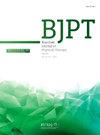有氧和阻力运动对2型糖尿病患者血糖的急性影响:系统回顾和荟萃分析
IF 3.1
3区 医学
Q1 ORTHOPEDICS
引用次数: 0
摘要
背景:2型糖尿病(T2D)在世界人口中最为普遍,运动是治疗这种健康状况的主要非药物干预措施之一。目的:评价单次有氧运动(AE)和/或阻力运动(RE)对T2D患者运动后血糖的影响。方法:检索截至2024年5月的CINAHL、Cochrane Library、EMBASE、谷歌Scholar、LILACS、MEDLINE/Ovid、SciELO、SPORTDiscus、Web of Science等数据库的文献,纳入随机和非随机临床试验。偏倚风险和证据确定性分别使用Cochrane“偏倚风险”和GRADE工具进行评估。结果:最初,确定了7210项研究,26项纳入系统评价,13项纳入荟萃分析。单次连续AE (CAE)、间歇AE (IAE)或RE可显著降低运动后第一分钟的血糖(-1.48 mmol/L [95% CI:-1.73, -1.23];-2.66 mmol/L [95% CI:-3.48, -1.84];-1.18 mmol/L [95% CI:-2.15, -0.21]),与对照组相比。这种减少在CAE治疗后持续10分钟(-1.61 mmol/L [95% CI:-2.21, -1.01]),在IAE治疗后持续30分钟(-1.11 mmol/L [95% CI:-1.88, -0.35])。偏倚风险评估为不确定,证据质量为中等。结论:CAE和IAE分别在完成后10分钟或30分钟内降低血糖,而单次RE仅在T2D患者运动后1分钟内降低血糖。本文章由计算机程序翻译,如有差异,请以英文原文为准。
Acute effect of aerobic and resistance exercise on glycemia in individuals with type 2 diabetes: Systematic review and meta-analysis
Background
Type 2 diabetes (T2D) is the most prevalent in the world population, and exercise is one of the main non-pharmacological interventions to treat this health condition.
Objective
To evaluate the effect of a single session of aerobic exercise (AE) and/or resistance exercise (RE) on post-exercise glycemia in individuals with T2D.
Methods
A literature search was conducted in CINAHL, Cochrane Library, EMBASE, Google Scholar, LILACS, MEDLINE/Ovid, SciELO, SPORTDiscus, and Web of Science up to May 2024, randomized and non-randomized clinical trials were included. The risk of bias and the certainty of evidence were assessed using the Cochrane "Risk of Bias" and GRADE tools, respectively.
Results
Initially, 7210 studies were identified, 26 were included in the systematic review, and 13 in the meta-analysis. A single session of continuous AE (CAE), interval AE (IAE), or RE promoted a significant reduction in glycemia in the first minute after exercise (-1.48 mmol/L [95 % CI:-1.73, -1.23]; -2.66 mmol/L [95 % CI:-3.48, -1.84]; -1.18 mmol/L [95 % CI:-2.15, -0.21], respectively), compared to the control session. This reduction persisted for up to 10 min after the CAE session (-1.61 mmol/L [95 % CI:-2.21, -1.01]) and up to 30 min after the IAE session (-1.11 mmol/L [95 % CI:-1.88, -0.35]). The risk of bias was assessed as uncertain, and the quality of the evidence was moderate.
Conclusion
CAE and IAE reduces glycemia for a period of up to 10 or 30 min after its completion, respectively, while a single session of RE reduces glycemia only in the first-minute post-exercise in individuals with T2D.
求助全文
通过发布文献求助,成功后即可免费获取论文全文。
去求助
来源期刊
CiteScore
6.10
自引率
8.80%
发文量
53
审稿时长
74 days
期刊介绍:
The Brazilian Journal of Physical Therapy (BJPT) is the official publication of the Brazilian Society of Physical Therapy Research and Graduate Studies (ABRAPG-Ft). It publishes original research articles on topics related to the areas of physical therapy and rehabilitation sciences, including clinical, basic or applied studies on the assessment, prevention, and treatment of movement disorders.

 求助内容:
求助内容: 应助结果提醒方式:
应助结果提醒方式:


